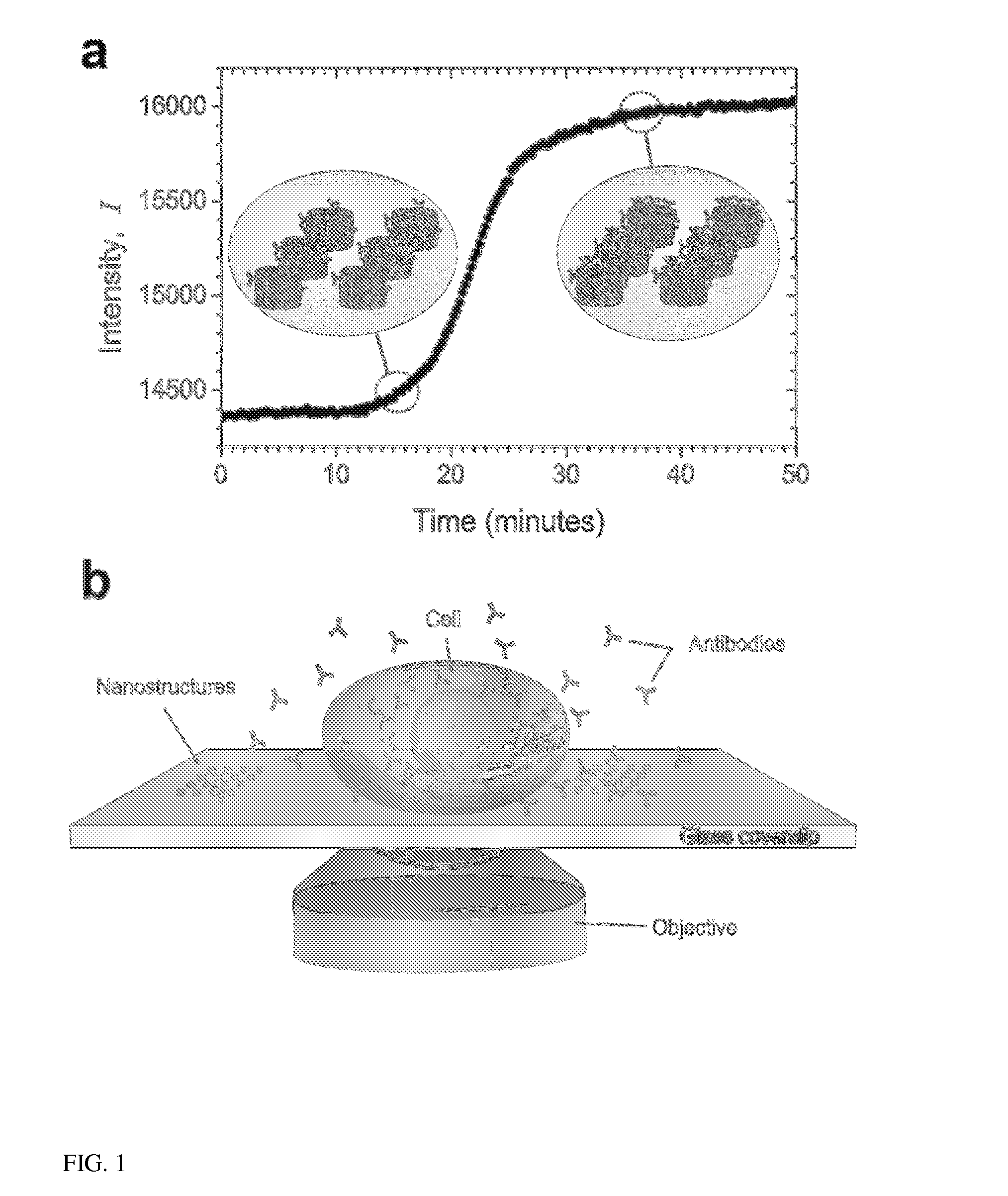Nanosplasmonic imaging technique for the spatio-temporal mapping of single cell secretions in real time
- Summary
- Abstract
- Description
- Claims
- Application Information
AI Technical Summary
Benefits of technology
Problems solved by technology
Method used
Image
Examples
Embodiment Construction
[0016]The present invention provides a label-free approach based upon localized surface plasmon resonance (LSPR) imaging for the real-time measurement of protein secretions from individual cells. LSPR biosensing is founded upon the fact that the plasmonic resonance of a metallic nanostructure exhibits both a red shift and an increase in scattering intensity when analyte binding creates small perturbations in the local index of refraction. When imaged on a CCD camera these spectroscopic signatures are manifested as an increase in the brightness of the nanostructures (FIG. 1(a)) and can be quantified in terms of the fractional occupancy of surface bound receptors. In contrast to thin-film based surface plasmon resonance (SPR) approaches that require total internally reflected light for the excitation of the surface plasmons, nanoplasmonic resonances can be excited with visible light using the same optical configurations used in traditional wide-field microscopy setups (FIG. 1(b)).
[001...
PUM
 Login to View More
Login to View More Abstract
Description
Claims
Application Information
 Login to View More
Login to View More - R&D
- Intellectual Property
- Life Sciences
- Materials
- Tech Scout
- Unparalleled Data Quality
- Higher Quality Content
- 60% Fewer Hallucinations
Browse by: Latest US Patents, China's latest patents, Technical Efficacy Thesaurus, Application Domain, Technology Topic, Popular Technical Reports.
© 2025 PatSnap. All rights reserved.Legal|Privacy policy|Modern Slavery Act Transparency Statement|Sitemap|About US| Contact US: help@patsnap.com



